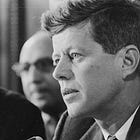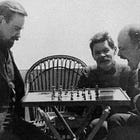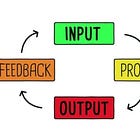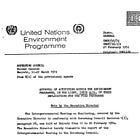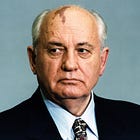In 1961, Robert McNamara arrived at the Pentagon carrying with him a revolutionary management system from Ford Motor Company. The Planning-Programming-Budgeting System (PPBS) promised to bring rational, scientific control to the chaos of military planning. What McNamara didn't advertise was that this seemingly mundane budgeting tool quite possibly could have become the foundation for a quiet act of treason in American history.
But let's start at the beginning.
McNamara's Trojan Horse
When John F. Kennedy appointed McNamara as Secretary of Defense, he thought he was getting a technocratic efficiency expert who could rein in the military-industrial complex that Eisenhower had warned about. And initially, that's exactly what PPBS appeared to do. The system forced the Pentagon to justify every expenditure through rigorous cost-benefit analysis, with five-year projections and measurable outputs replacing the traditional military practice of simply demanding bigger budgets.
The Joint Chiefs hated it. Admiral George Anderson was fired for resisting McNamara's ‘whiz kids’. General Curtis LeMay openly refused to endorse McNamara's Five-Year Defense Program. The military establishment was in revolt against what they correctly perceived as a civilian takeover of strategic planning.
Yet, Kennedy used PPBS as a scalpel to cut military spending and assert civilian control over a defense budget out of control. And why not — JFK’s predecessor, Eisenhower, had famously parted ways with the White House warning of precisely the military-industrial complex1.
But Kennedy began to have second thoughts. After the Cuban Missile Crisis nearly led to nuclear war, JFK started questioning whether complex strategic decisions should be made by systems analysts with no combat experience, using computer models that couldn't account for human unpredictability. When proposals emerged to expand PPBS beyond defense — into a National Information Center that would centralise scientific research under federal control — Kennedy's skepticism hardened into resistance.
By 1963, JFK was actively working to prevent the spread of systems-based governance. As part of the CIA house-cleaning effort following the Bay of Pigs disaster, he dismissed Robert Amory Jr., the CIA's Deputy Director of Intelligence who was investigating embedding systems theory into intelligence operations, and who with Arthur Schlesinger Jr promoted a ‘World Congress for Freedom and Democracy’ which would transfer power to large foundations. But Kennedy didn't simply fire Amory — he had him wiretapped, indicating the president viewed the now-former left-wing CIA DD/I as a genuine threat. Kennedy might well have come to understand that PPBS wasn't just a budgeting tool, but rather an architecture of technocratic control. He certainly began to express skepticism about systems analysis in general.
And that's likely when Kennedy became a problem that had to be solved.
On November 22, 1963, John F. Kennedy was murdered in Dallas. Within days, everything changed.
Lyndon Johnson immediately reversed Kennedy's Vietnam withdrawal order (NSAM 2632) with NSAM 2733, committing to escalation. But the more significant change was invisible to the public: Johnson began issuing a series of executive orders granting the Federal Reserve unprecedented access to private banking data — the exact type of financial surveillance infrastructure that would be needed for economy-wide input-output modeling, and of expressly the sort outlined extensively in the controversial document, Silent Weapons for Quiet Wars.
The plans for expanding PPBS beyond defense suddenly accelerated. By early 1964, the CIA were quietly experimenting with PPBS. The technocratic faction that Kennedy had been purging was back in business — and this time there was no resistance from the White House.
But the most intriguing development was happening on the international stage.
The Moscow Mystery
In 1964, at the height of the Cold War, David Rockefeller traveled to the Kremlin for meetings with Soviet leadership4. The official purpose was allegedly economic cooperation and trade discussions. But consider the timing: this was less than two years after the Cuban Missile Crisis, when US-Soviet relations were supposedly at their most hostile.
What did Rockefeller actually discuss in Moscow? The official records claim the point of discussion was ‘trade’, but these are severely lacking in detail5. Supposedly, the typically unpredictable Khrushchev became heated in discussions — but perhaps we can deduce the substance from what followed on the international stage.
Could David Rockefeller have gone to Moscow to coordinate the simultaneous implementation of parallel technocratic systems in both superpowers?
The evidence for this isn't direct — it's inferential. But it appears a coherent and defensible logical deduction, because only months later, Khrushchev was sidelined and Alexei Kosygin was installed in a pivotal position of power.
The Simultaneous Revolution
In 1965, the two supposedly hostile superpowers made identical systemic changes:
In the United States, Johnson issued a presidential memorandum mandating PPBS implementation across all federal agencies6. What had been a Pentagon experiment became the operating system of the entire U.S. government.
In the Soviet Union, Kosygin introduced OGAS7, a nationwide automated system for economic planning based on cybernetic principles that were functionally identical to PPBS input-output modeling.
The mathematical probability of two adversarial systems spontaneously adopting identical management frameworks in the same year appears remote. This smells somewhat of outright coordination. Especially when you consider that Khrushchev was ousted in October 19648, just months after Rockefeller's Moscow visit9, and replaced by the very duo — Kosygin and Brezhnev10 — who would implement the new system. Would it be impossible that Khrushchev was removed for refusing to cooperate with what Rockefeller's suggested?
The Technical Convergence
The simultaneous emergence of the Planning-Programming-Budgeting System in the United States11 and the Kosygin economic reforms in the Soviet Union12 represents one of the most remarkable cases of parallel institutional evolution in the Cold War era. When examined purely on technical grounds, the similarities between these systems are so extensive as to suggest a common intellectual foundation that transcended ideological boundaries.
Cybernetic Foundations
Both reforms were fundamentally grounded in cybernetic theory — the science of communication and control in complex systems developed by Norbert Wiener and others in the 1940s — and based on Leontief’s Input-Output Analysis, likely lifted from Alexander Bogdanov in the early 1920s. Cybernetics provided the conceptual framework for treating large organisations as information-processing networks that could be optimised through systematic feedback mechanisms.
In the Soviet context, cybernetics had initially been dismissed as ‘bourgeois pseudoscience’ under Stalin13, but was rehabilitated in the late 1950s. Soviet mathematicians like Anatoly Kitov and Viktor Glushkov became pioneers in applying cybernetic principles to economic planning, with especially Glushkov's OGAS project14 forming the technical backbone of the Kosygin reforms, explicitly designed as a cybernetic control system for the entire Soviet economy.
Similarly, PPBS emerged from the cybernetic revolution in American management science. The RAND Corporation — where many PPBS techniques were developed — was heavily influenced by operations research and cybernetic theory. Charles Hitch and Roland McKean's ‘The Economics of Defense in the Nuclear Age’15 — the foundational text for defense systems analysis — repeatedly invoked cybernetic concepts of system optimisation and feedback control.
Mathematical Optimisation Techniques
Both systems relied on identical mathematical tools derived from operations research16. Linear programming17, developed by George Dantzig in the 1940s, became central to both PPBS and Soviet planning. Remarkably, Leonid Kantorovich had independently developed similar optimisation techniques in the USSR in 193918, winning the Nobel Prize in 1975 for work that paralleled Western operations research— incidentally, explicitly the sort outlined by Silent Weapons for Quiet Wars.
Input-output analysis, pioneered by Wassily Leontief, provided another crucial convergence point. Leontief's technique for modeling economic interdependencies was adopted by both the Pentagon's systems analysts and Soviet central planners. In fact, Leontief himself consulted with Soviet economists and his models were extensively studied at the Central Economic Mathematical Institute (TSEMI) in Moscow19.
The use of dynamic programming and game theory further demonstrates the shared mathematical foundation. Both systems employed multi-period optimisation models that could account for strategic interactions and uncertainty over time. The mathematical foundations were virtually identical, whether applied to defense procurement decisions or industrial production targets.
Information Architecture and Computing
Both reforms were predicated on the belief that superior information processing could solve organisational complexity. This required similar technological infrastructure: centralised databases, standardised reporting formats, and computational capacity for large-scale modeling.
The Soviet OGAS project envisioned a nationwide network of computers that would collect, process, and distribute economic information in real-time20. This was remarkably similar to McNamara's vision for the Pentagon, which involved centralising all defense information in standardised formats that could be processed by the Department's growing computer systems21.
Both systems emphasised the quantification of previously qualitative decisions. In the Soviet case, this meant reducing all economic choices to mathematical optimisation problems22. In the American case, it meant translating military strategy into cost-effectiveness calculations. The underlying assumption was identical: rational decision-making required converting human judgment into algorithmic processes.
Performance Measurement and Control
Perhaps the most striking convergence lay in how both systems restructured organisational accountability. Traditional hierarchical control was replaced with what upon reflection might be called ‘cybernetic governance’ — control through information flows and performance indicators rather than direct command; a model influencing later drives to turn all surveillance data into indicators, modelled through Digital Twins.
The Kosygin reforms introduced profit and sales volume as key performance indicators for Soviet enterprises23, replacing the previous system of gross output targets. This represented a fundamental shift toward market-like signals within a planned economy. Enterprises were given greater autonomy in operational decisions while being held accountable to quantitative performance metrics. PPBS implemented an analogous transformation in American defense. Military services were no longer judged on traditional measures like force levels or equipment quantities, but on their contribution to specific defense outputs measured through systems analysis. Program managers were given flexibility in how they achieved objectives while being held strictly accountable to cost-effectiveness criteria.
Both systems established what cybernetic theorists called ‘requisite variety’24 — the information-processing capacity necessary to control complex systems. They created standardised categories for breaking down organisational activities (program structures in PPBS, enterprise classifications in the Soviet system) and instituted regular reporting cycles that generated vast quantities of quantitative data.
Long-Range Planning Integration
Both reforms integrated short-term resource allocation with long-term strategic planning through multi-year projection models. The Pentagon's Five-Year Defense Program became the operational manifestation of PPBS, projecting costs and capabilities across a rolling five-year horison25. The Soviet system similarly extended planning horisons, with the Kosygin reforms emphasising the integration of annual plans with five-year and longer-term development strategies26.
These planning systems required sophisticated forecasting techniques and scenario analysis. Both sides developed elaborate econometric models that attempted to predict technological change, resource availability, and strategic requirements years into the future. The mathematical techniques — time series analysis, Monte Carlo simulation, sensitivity testing — were virtually identical.
Organisational Restructuring Principles
Both reforms reorganised traditional bureaucratic structures around functional rather than institutional logic. PPBS broke down military planning along mission-oriented program lines that cut across service boundaries27. The Kosygin reforms similarly reorganised Soviet industrial management around production chains rather than administrative hierarchies.
This represented a fundamental shift from what organisational theorists call ‘mechanistic’ to ‘organic’ management structures28. Traditional bureaucratic departments were replaced with matrix organisations, project teams, and functional groupings that could be reconfigured as analytical requirements changed.
The role of specialised analytical staff expanded dramatically in both systems. The Pentagon's ‘whiz kids’ and the Soviet Union's mathematical economists occupied similar positions as technical specialists who translated political objectives into operational parameters through quantitative analysis.
The Convergence Paradox
The technical similarities between PPBS and the Kosygin reforms extended beyond mere methodological parallels to encompass fundamental assumptions about governance itself. Both systems embodied the belief that complex social organisations could be optimised through scientific management techniques. Both assumed that political decisions could be improved by subjecting them to rigorous analytical processes. Both treated traditional institutional arrangements as obstacles to rational resource allocation.
This convergence occurred despite the supposedly irreconcilable ideological differences between capitalist and socialist systems. The shared emphasis on cybernetic control, mathematical optimisation, and technocratic decision-making suggests that technological imperatives were driving parallel organisational evolution regardless of political context. The mathematical foundation in fact was so similar that analytical techniques developed for one system could be directly applied to the other with minimal modification, reflecting a likely common intellectual heritage.
The Cooperation Charade Begins
In 1966, something remarkable happened. LBJ — the same president who was escalating the Vietnam War — began speaking publicly about the need for ‘constructive cooperation’ with the Soviet Union29. Johnson's speeches called for finding ‘common ground’ and ‘addressing shared challenges’ that would require joint American-Soviet responses. He specifically mentioned environmental monitoring and scientific cooperation. NSAM 34530 explicitly directed the development of ‘forward-looking proposals’ for cooperation with the Soviet Union and Eastern Europe.
Why would the United States suddenly seek cooperation with the USSR while fighting a proxy war in Vietnam31? Could it be because the groundwork for cooperation had already been laid in Moscow in 1964?
The Environmental Trojan Horse
By 1969, the framework for US-Soviet ‘cooperation’ was taking concrete form. Daniel Patrick Moynihan issued his memo calling for NATO to establish global environmental surveillance systems32. Simultaneously, Soviet representatives were proposing international environmental monitoring programs.
The two superpowers weren't developing competing systems — they were developing compatible systems designed for integration. And this culminated on May 23, 1972, when Nixon and Kosygin signed the US-USSR Agreement on Environmental Protection33. Later that same year, the International Institute for Applied Systems Analysis (IIASA) was founded as the operational hub for joint American-Soviet systems modeling34. The official narrative is that this represented a thaw in Cold War tensions. But it appears only too well aligned with a technocratic fusion that had been planned since at least 1964.
The Threat of a Third Way
But there was a problem with the emerging US-Soviet technocratic fusion: someone had built a working alternative. In Chile, Salvador Allende's government was implementing Project Cybersyn35 — a cybernetic management system that shared the mathematical foundations of both PPBS and the Kosygin reforms while rejecting their fundamental premise of centralised control. Where both superpowers had used cybernetic language to justify technocratic oligarchy, Cybersyn actually implemented Beer's original vision36: recursive feedback loops that empowered workers and local managers to make real-time decisions within a coordinative framework.
This wasn't merely ideological competition — it was an existential threat to the entire US-USSR convergence project. Under adverse conditions, Cybersyn had hinted its effectiveness during the 1972 and 1973 truckers' strikes37, maintaining supply chains through adaptive coordination rather than bureaucratic command or market mechanisms. If successful, Chile's model could be exported throughout the developing world, offering nations a third option beyond choosing between American PPBS or Soviet central planning, both of which ultimately led to the same system. The global environmental monitoring system being constructed through US-USSR cooperation required that all participating nations adopt compatible technocratic structures — centralised data collection feeding into supranational modeling centers like IIASA, with expert panels ultimately ruling on modelled issues such as those relating to the climate. A proliferation of genuinely decentralised cybernetic systems would fragment this unified surveillance architecture and demonstrate that ‘scientific management’ didn't require surrendering democratic participation to unelected global experts. By 1973, as the environmental cooperation framework was being finalised, Cybersyn had become more than a Chilean experiment — it was a competing paradigm that threatened to unravel the entire technocratic fusion that the Ford and Rockefeller Foundations had worked to accomodate for a decade by then already.
The Logical Chain
The pattern emerging can be briefly summarised as such:
1961: McNamara introduces PPBS as a tool of technocratic control
1962: McNamara’s systems suggest precision strikes on Cuba, which JFK correctly overruled.
1963: Kennedy recognises the threat and begins resistance. Robert Amory, Jr is put under surveillance.
November 1963: Kennedy is assassinated, removing resistance
1964: Rockefeller visits the Kremlin
October 1964: Khrushchev is removed for refusing cooperation
1965: Both superpowers through LBJ and Kosygin simultaneously implement identical systems
1966: Public ‘cooperation’ rhetoric begins in the same year as the ‘Spaceship Earth’ narrative starts to form (closed system general systems theory on a global scale), with LBJ delivering a speech which surprised many as it dealt with cooperation between the two superpowers
1968: The UNESCO Biosphere Conference takes place in Paris, the first to treat the entire world as the closed-system general systems theory ‘Spaceship Earth’ model
1968: McNamara goes to the World Bank, through which PPBS is relaunched through CPP (Country Program Papers38), later used as a precondition for third-world nations accessing foreign aid.
1969: Moynihan speaks of NATO running global environmental surveillance.
1971: SCOPE’s (Scientific Committee on Problems of the Environment) first report is published, specifically on Global Environmental Monitoring.
1972: Environmental agreement formalises the fusion through the May 23, 1972 US-USSR agreement on Environmental Cooperation, negotiated by Russell E Train of the Conservation Foundation, and Henry Kissinger.
1972: The United Nations Environment Programme launches, with the first course of action being the establishmnt of the global environmental surveillance programme (UNEP GEMS39).
1972: The IIASA is founded, which goes on to perform global modelling of the input surveillance data generated by UNEP GEMS.
1973: SCOPE’s third report, outlining the practical action plan wrt the implementation of the Global Environmental Monitoring System; a plan which further includes specific mention of public health surveillance and what came to be known later as the social determinants of health indicators.
1973: Salvador Allende is deposed, and within hours of revolution, Project Cybersyn is dismantled, and destroyed. Related key personnel are sentenced unusually harsh prison sentences.
1974: UNEP GEMS is established, and public health surveillance is quickly included in data streams, along with the determinants of health which the 1974 Lalonde report out of Canada calls for40.
Key documents proving this outline of course are impossibly to obtain, as they would be tightly under top secret clearance — yet, if true, this could have marked the very creation of a supranational technocratic system that would come to operate above and beyond both American and Soviet sovereignty. And that is a trajectory which is easily visible these days.
The Verdict
If this reconstruction is accurate, it would constitute outright treason. Not the casual, ‘light’ treason of selling state secrets, but the deliberate coordination with a foreign adversary to subvert the constitutional government of the United States.
Yet, as previously discussed, the environmental cooperation framework wasn't about protecting the planet. It was about creating a global surveillance and management system that would render national sovereignty obsolete. IIASA wasn't a research institute — it was a command center for planetary management by technocratic elites operating beyond democratic accountability. And this part of the plan worked almost flawlessly, with the IPCC nothing short of beyond reproach in present settings.
Today, we live under the ‘Spaceship Earth’ system engineered in the 60s: governance by digital twin modelling of surveillance data indicators and biodiversity targets, sustainable development goals, the global health security agenda, human development indices… — all ultimately coming down to policy driven by computer models, democratic decisions subordinated to ‘scientific consensus’ manufactured by unelected experts, and framed as moral imperatives under a claimed ‘global ethic’. The climate regime, the biodiversity framework, the sustainable development goals, the pandemic health governance — all of it traces back to a systems integration that began with Kosygin and LBJ in the mid-60s.
The latter part of the Cold War was theater. The real battle was between human governance and machine governance. And the machines ultimately won that challenge in Dallas, November 1963. Yet, the question still remains — how come PPBS was rolled out at almost exactly the same time as Kosygin’s 1965 reforms? And why was Khrushchev ousted a mere months following Rockefeller’s visit to the Kremlin?
If the evidence exists, it would almost certainly be above top secret. But the pieces of the puzzle appear to fit together worryingly well. Sure, some might be tempted to argue that it was just a coincidence. But, frankly, what isn’t claimed to be just that these days?








